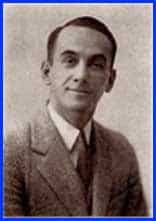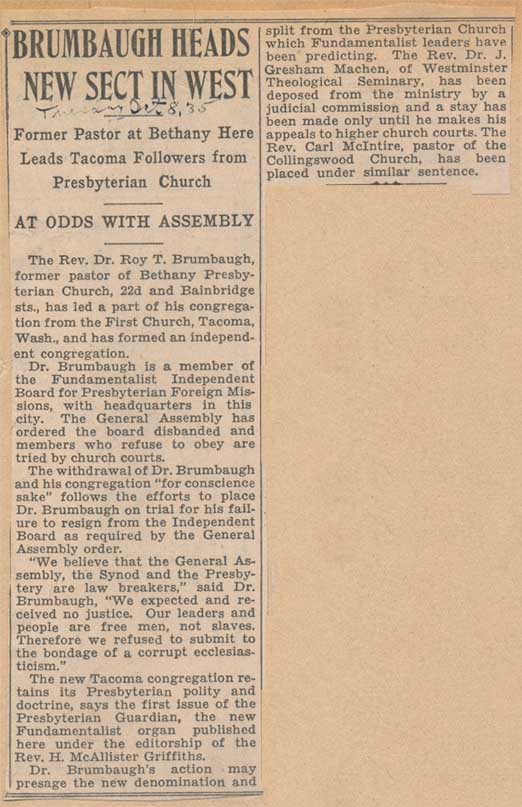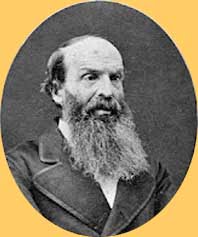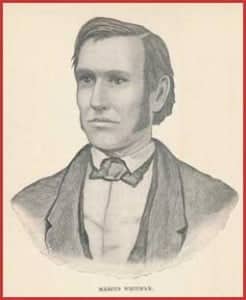This Day in Presbyterian History: A Publishing Family Heritage
From 1839 to 1960 plus, one family surely set the record for publishing in the news world. That family was the Converse family and their religious magazine continues to be published on the web in the present day, though others are at the head of it. The magazine is the Christian Observer.
![Amasa Converse, D.D. [21 August 1795 - 9 December 1872]](https://thisday.pcahistory.org/wp-content/uploads/2012/08/ConverseAmasa.jpg) The patriarch of the family was Amasa Converse, born on August 21, 1795 in Lyine, New Hampshire. His education included Phillips Academy in Andover. After that, he taught for a while when he grew up in adulthood. Then he entered Dartmouth College in 1818, where four years later he graduated with honors. Feeling a call into the gospel ministry, he entered Princeton Theological Seminary.
The patriarch of the family was Amasa Converse, born on August 21, 1795 in Lyine, New Hampshire. His education included Phillips Academy in Andover. After that, he taught for a while when he grew up in adulthood. Then he entered Dartmouth College in 1818, where four years later he graduated with honors. Feeling a call into the gospel ministry, he entered Princeton Theological Seminary.
His sole teacher was Dr. Archibald Alexander, where he learned the famous theological system of doctrine of what later on became Old School Presbyterians. In fact, so well did he learn it, that Dr. Alexander told him that he had enough book knowledge for a vocation and seek a milder climate in which to communicate it!
Ordained by the Presbytery of Hanover in 1826, he became a missionary in Virginia for two years. But then the door opened for him for what would become his life’s calling in publishing. He became editor of “Visitor and Telegraph” newspaper in Richmond, Virginia for twelve years until 1839.
 The Christian Observer came upon the scene in 1840. This namesake of a magazine absorbed fourteen other periodicals of that day, like the Religious Remembrancer, The Family Visitor, the Religious Telegraph and Observer, the Protestant and Herald, and the Cincinnati Standard. Its real basis was found in Louisville, Kentucky.
The Christian Observer came upon the scene in 1840. This namesake of a magazine absorbed fourteen other periodicals of that day, like the Religious Remembrancer, The Family Visitor, the Religious Telegraph and Observer, the Protestant and Herald, and the Cincinnati Standard. Its real basis was found in Louisville, Kentucky.
That Christian Observer was published first in Philadelphia, Pennsylvania from 1840 to 1861. It was ruthlessly ordered closed by Lincoln’s Secretary of War, Stanton, but a local United States District Attorney rejected the attempt, citing freedom of the press. Seeing the proverbial handwriting on the wall, Amasa Converse closed up the publishing house in Philadelphia, and opened another one in Richmond, Virginia in 1861, where for the next eight years it was to be used of the Lord to help bring revival among the Confederate Army. After the war, it moved to Louisville, Kentucky until 1872.
Amasa Converse died in December of 1872, but the work continued under the eldest son.
Words to live by: The power of the printed word, and often in this case, the printed Word of God, can be an effective tool in the hands of the Holy Spirit to point sinners to Christ, and saints to sanctification. When God calls an individual, and in this case, a family of publishers, much good will occur for Christ’s kingdom from such a ministry today. The Christian Observer continues to be a vehicle for Presbyterian and Reformed ministries as a web newspaper.
Through the Scriptures: Lamentations 1 – 5
Through the Standards: The parts of worship
WCF 21:3
“Prayer, with thanksgiving, being one special part of religious worship, is by God required of all men: and, that it may be accepted, it is to be made in the name of the Son, by the help of the Spirit, according to His will, in understanding, reverence, humility, fervency, faith, love, and perseverance; and, if vocal, in a known tongue.”
See also the PCA Book of Church Order 47-9 :
47-9. The Bible teaches that the following are proper elements of worship service: reading of Holy Scripture, singing of psalms and hymns, the offering of prayer, the preaching of the Word, the presentation of offerings, confessing the faith and observing the Sacraments; and on special occasions taking oaths.
Image sources:
1. Amasa Converse – Engraved portrait from Alfred Nevin’s Presbyterian Encyclopedia (1884), page 155.
2. The Religious Remembrancer, vol. 1, no. 1, (4 September 1813) – scanned image of an original copy preserved at the PCA Historical Center.
All scans prepared by the staff of the PCA Historical Center.





![Rev. Dr. Daniel Baker [17 August 1791 - 10 December 1857]](https://thisday.pcahistory.org/wp-content/uploads/2012/08/bakerDaniel-204x300.jpg)